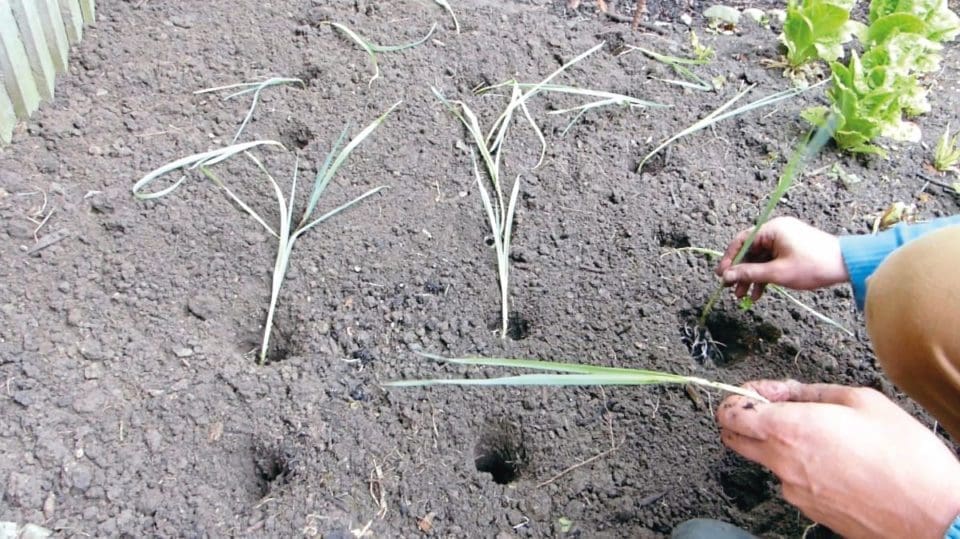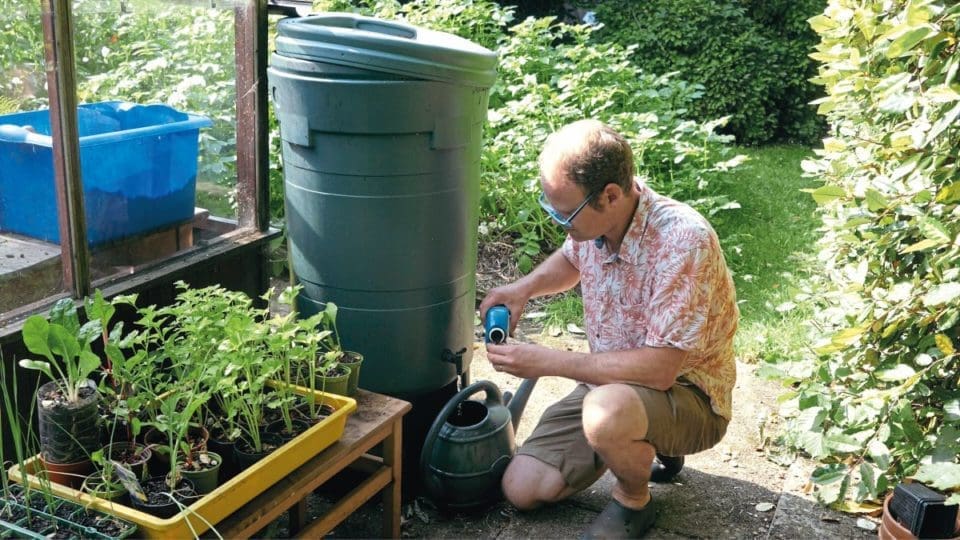Ben Vanheems shares some essential tasks to carry out in your garden and allotment for June.
SOW NOW
Beetroot, cabbage, calabrese, carrots, chicory, chillies, courgettes, cucumber, endive, Florence fennel, French beans, kale, kohl rabi, leeks, lettuce, peas, radish, salad leaves, spinach, spring onion, sprouting broccoli, squash and pumpkin, swede, sweetcorn, Swiss chard, turnips
PLANT NOW
Aubergine, Brussels sprouts, cabbage, cauliflower, celeriac, chillies, courgettes and marrows, French and runner beans, leeks, peppers, squash and pumpkins, sprouting broccoli, strawberries, sweetcorn
HARVEST
Asparagus, beetroot, broad beans, broccoli, carrots, cauliflower, garlic, kohl rabi, lettuce, onions, peas, potatoes, radish, rhubarb, salad leaves, spring onion, strawberries, Swiss chard
Pick, pull and sow
June is a glorious month in the kitchen garden: the first fresh and tender pickings of the season are finally under way. But this is just the start, with so much more to look forward to!
Daylength reaches its zenith on June 21 as the summer solstice ushers in the warmer, more settled months of summer. This is a good moment to consider topping up soil fertility. Use an organic, balanced fertiliser for this purpose. I love chicken manure pellets, which because they are dried out offer a far more concentrated source of nutrients than fresh manure. Another great option is blood, fish and bone, a sterile mix of those three animal-derived by-products.
Hot, dry spells of weather can arrive at any time. Prepare your vegetables by topping up mulches around actively growing plants. Dried grass clippings, garden compost and bark chippings (around larger plants and fruit bushes) are all excellent choices.
Succession sow
Carry on sowing quick-growing staples like lettuce, radish, spring onions and beetroot. Sow short rows every few weeks, making new sowings as the previous germinate.
Harvest first earlies
First early potatoes may be ready to harvest. They have less foliage than maincrop varieties, making it harder to tell when they’re ready, so dig up a few plants to check.
Propagate strawberries
Pin down strawberry runners on to the ground or pots of compost to propagate new plants. Cut the runners off if you don’t need any new plants.
Start follow-on crops
Sow vegetables to follow on from earlier crops. This includes winter staples like kale, sprouting broccoli and swede, together with maincrop carrots for storing.
Three steps to better sweetcorn
STEP 1: Plant sweetcorn after your last frost date, from mid-May in the south to early June in the north. Set plants in a block, about 30cm (12in) apart in both directions. Sweetcorn is wind pollinated, so planting in a block, instead of long rows, ensures better spread of pollen.
STEP 2: This photo shows sweetcorn in early July as the plants really get into their stride and put on fast growth. Sweetcorn responds to warm conditions, but you can tip the balance in your favour by selecting an early maturing variety suited to our climate, such as ‘Swift F1’.
STEP 3: Improve pollination still further when plants come into flower. Tap firmly on the stems to dislodge the pollen from the dangling stamens at the top of the plant. The pollen will drift down on to the female silks. Each strand of pollinated silk forms one corn kernel.
Plant leeks
Plant leeks once they reach about pencil thickness. Traditionally, leeks are planted into holes made with a dibber about 12cm (5in) deep. This helps the young plants establish and promotes longer, white stems. Simply lower one leek plant into each hole then fill up the hole with water. Soil will fall back on to the roots as the water drains through, while the hole itself will be filled by the stem as it swells. Alternatively, start leeks off in modules, plant them out then bank up the soil against the stems in stages, in the same way as earthing up potatoes. Don’t let soil fall in between the leaves or you may get a gritty harvest.

Pests & Problems
■ CABBAGE WHITE BUTTERFLY: Deploy netting to keep the female butterflies from laying eggs on your brassicas. Suspend netting off plants so they can’t lay through the mesh. Inspect exposed leaves regularly and squish or remove any egg clusters you find.
■ PEA MOTH: The small, creamy white caterpillars are only discovered on shelling the pods as they eat into the peas themselves. Grow peas under insect-proof mesh or opt for mangetout varieties, which are picked before they can be affected.
■ GREY MOULD: This common disease of lettuce, soft fruits and tomatoes causes a furry, grey-brown mould or soft brown decay. Avoid overcrowding plants to improve airflow. Open up vents under cover and remove all dead plant material.
Under cover

Feeding time
It won’t be long before the first flowers of greenhouse favourites like tomatoes and peppers appear, and with them the promise of their delicious, flavour-filled fruits.
Begin feeding plants as soon as they come into flower. Use a fertiliser high in potassium to encourage both flowers and fruits. Any liquid tomato feed would be ideal. If you mixed some controlled-release fertiliser into the compost at planting time, delay this extra feeding until the first fruits are starting to form.
Most tomato feeds are watered on every week or two but follow the product instructions for exact timings and strengths. As well as encouraging good fruit set, regular feeding improves the taste and nutritional value of the fruits while reducing the risk of problems such as blossom end rot, a plant disorder caused by a lack of available calcium.
Feeding plants is one area it definitely does not pay to scrimp. Properly fed and watered plants have all the resources they need to give a bigger, better crop, more than paying back the cost of the feed.
Train cucumbers
Plant greenhouse cucumbers into large pots, growbags, or border soil with plenty of well-rotted compost added for good measure. Keep the compost or soil steadily moist and feed regularly with a liquid fertiliser.
Greenhouse cucumbers need training. Tie the central stem to a cane or vertical wire, then pinch out the top once it reaches the roof. Sideshoots also need pinching out: nip out the growing points to two leaves past each female flower. Many modern cucumber varieties are all-female, though you can easily identify the female flowers by the embryonic fruit immediately behind them. Remove all male flowers, which aren’t needed and can make the fruits taste bitter. Sideshoots without any flowers on should be pinched out once they get to about 60cm (2ft) long.
Pick a perfect pepper
STEP 1: If you haven’t sown any peppers, you can buy ready-to-pot plants online or in the garden centre. Look out for grafted peppers, which will be more vigorous. Pot them into two-litre pots initially, using a compost opened up with some perlite for better drainage.
STEP 2: Peppers and chillies respond well to almost drying out between waterings. Check for moisture at root level by pushing a finger in or lift the container to gauge its weight. Start feeding with a high-potash feed such as a tomato feed once the first flowers appear.
STEP 3: Peppers love warm weather but can struggle to set fruit in very dry conditions. Help them along by misting to raise humidity, or stand pots in trays of water, raised on stones so they aren’t sitting in the water. Regularly check for aphids and squish or blast off with a hose.
Sow winter brassicas
Don’t forget those all-important winter brassicas: kale, sprouting broccoli and cabbages like the crinkled Savoy types. Sow direct into modules – two or three seeds into each module then thin to leave the strongest seedling – or start seedlings off in pots to prick out after they have germinated. Growth should be rapid and the young plants ready to go into their final positions just four to six weeks after sowing. Greenhouse seedlings can be protected from cabbage white butterflies by rigging up a simple butterfly-proof cage, or cover seedlings with horticultural fleece or insect mesh.
Key Jobs for June
■ MOVE CITRUS OUTSIDE
Citrus plants like lemons can follow other tender crops outside for the summer. The extra light and improved airflow will help boost growth while freeing up more space under cover. Feed citrus throughout the summer with a citrus fertiliser to encourage healthy foliage.
■ KEEP IT COOL
With temperatures rising, ventilation becomes more important than ever. Open vents and doors to help keep the space cool and leave them open overnight if necessary. Automatic ventilators are worth considering in preparation for long absences in the summer holidays.
■ SOW HERBS
Sow leafy herbs like basil, dill and chervil. Sow dwarf varieties of dill directly into larger containers then thin to about 10cm (4in) apart. Chervil is a great herb for overwintering under cover. Sow into pots then prick out into their own pots once large enough to handle.
■ WATER WISELY
Most greenhouse crops appreciate a steady supply of moisture. Check plants daily and water up to twice a day in hot weather. Don’t water too late in the evening, so foliage has a chance to dry off before nightfall. Aim water at the base of plants and avoid wetting foliage.











